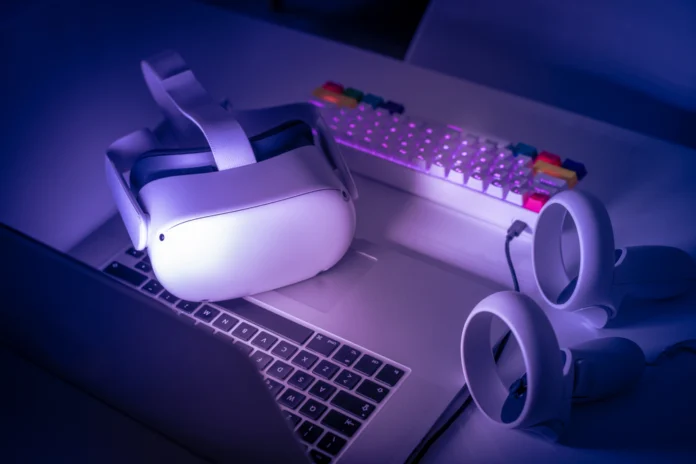The next generation of wearable technology is positioned to revolutionize health monitoring and safety through AI enhancements and predictive analytics. Wearables will provide real-time perspectives into users’ health, detecting anomalies and offering personalized guidance. Innovations in power management and connectivity will support longer battery life and seamless integration with smart devices. Luxury wearables are also on the rise, merging style with functionality. Advancements in smart clothing promise even more engagement. There’s much more to investigate in this exciting evolution.
Highlights
- Next-generation wearables will feature advanced biometric analysis for real-time health monitoring and early detection of chronic conditions.
- Innovations in smart clothing will integrate embedded sensors, tracking physiological data while enhancing comfort and style.
- The luxury wearable market will expand, combining high fashion with advanced health functionality, including unique designs like diamond-embedded smart rings.
- Enhanced connectivity through 5G and edge computing will allow seamless interaction with smart devices and more efficient data processing.
- AI-driven personalization will lead to more engaging and adaptive wearables, better suited to individual health needs and preferences.
The Rise of AI-Enhanced Health Monitoring
The scenery of health monitoring is undergoing a significant metamorphosis with the rise of AI-enhanced wearable technology. These innovative devices utilize biometric analysis to detect subtle anomalies in health metrics, such as heart rate variability and sleep consistency, allowing for early intervention before symptoms manifest. Real-time alerts empower users to take preemptive action, reducing the need for frequent clinical visits. Moreover, wearables offer personalized nudges for healthier behaviors, encouraging hydration and stress management. As predictive algorithms identify patterns related to chronic conditions, like diabetes and cardiovascular issues, individuals can feel more connected to their health journey. This evolution in health monitoring not only democratizes access to vital data but fosters a sense of belonging to a proactive health-conscious community. Additionally, AI-powered wearables contribute to a broader ecosystem of care, enhancing collaboration between users and healthcare providers. As the market for these devices expands, there is a growing focus on integrating wearables with advanced sensor technology to provide more accurate and reliable data. Furthermore, AI-driven wearable devices help reduce healthcare costs by minimizing the need for hospitalizations and medical interventions.
Predictive Safety Features in Work Wearables
As workplaces increasingly prioritize safety, predictive features in wearable technology are becoming essential tools for risk management. These advancements incorporate various safety features, enabling real-time hazard detection to profoundly transform workplace environments. Biometric risk analysis monitors heart rate and body temperature, flagging anomalies that indicate potential health risks. Movement and posture sensors aid in preventing repetitive strain injuries by alerting workers to ergonomic hazards. In high-risk areas, impact sensors and proximity alerts enhance fall and collision prevention. Environmental hazard detection guarantees workers are aware of toxic gases and extreme temperatures. AI integration into these wearables enhances their ability to predict and prevent incidents before they occur. The global market for wearable AI devices is growing rapidly, reflecting the increasing demand for these innovative safety solutions. The integration of technology in safety practices is redefining industry standards.
Innovations in Power and Connectivity
While innovations in power and connectivity continue to reshape the terrain of wearable technology, the emphasis on enhancing user experience and functionality remains at the forefront. Energy harvesting techniques, utilizing body heat and movement, diminish reliance on conventional charging, granting wearables the ability to derive power from ambient sources. Improved power management systems facilitate extended battery life, allowing multi-week usage between charges and reducing maintenance demands for users. The integration of 5G connectivity enables ultra-low latency communication for real-time health monitoring, while edge computing conserves bandwidth. Moreover, seamless interaction with smart home devices promotes a connected ecosystem, reinforcing a sense of belonging among users. Together, these advancements promise to redefine the wearables scenery, prioritizing convenience and connectivity. Additionally, the shift from data tracking tools to holistic health coaching is enhancing user engagement and transforming the purpose of wearables. Wearables now leverage advanced biometric sensing technology to provide users with personalized insights based on their individual health data. Furthermore, the incorporation of AI-powered personalization allows wearables to adapt to changing user needs, making them not just tools, but companions in health management.
Advanced Health and Fitness Tracking Technologies
Wearable technology’s evolution continues with sophisticated health and fitness tracking capabilities that promise to enhance personal wellness to unparalleled levels. Advanced health trackers now feature biosensors capable of sweat analysis, core body temperature monitoring, and non-invasive glucose detection, providing users with comprehensive insights into their well-being.
Real-time health monitoring includes blood pressure tracking and respiratory assessments, crucial for managing health risks. Moreover, predictive analytics utilize AI to offer early warnings for chronic conditions and stress fluctuations. Mental and emotional health is also prioritized, with devices measuring stress levels and mood. Wearable devices have moved beyond step counting, making it possible for users to have a more holistic view of their health metrics and lifestyle. Recently, non-invasive glucose monitoring was taken a leap forward with the introduction of LifeLeaf, allowing for continuous monitoring without the need for fingersticks or arm cuffs. Additionally, the future of wearables involves seamless integration with healthcare systems, ensuring a more cohesive approach to well-being.
With clinical-grade accuracy, these wearable devices empower users to take control of their health, fostering a sense of belonging in a community focused on holistic wellness.
The Intersection of Luxury and Wearable Tech
The convergence of luxury and wearable technology is revolutionizing the marketplace, positioning high-end devices as both fashion statements and sophisticated health monitors. The luxury wearables sector is set for outstanding growth, predicted to increase by $100 billion from 2025–2029, with collaborations between tech giants like Meta and respected brands such as EssilorLuxottica redefining luxury tech partnerships. Innovations utilizing luxury materials, including diamond-embedded smart rings and sustainable designs crafted from recycled metals, offer a seamless blend of elegance and advanced functionality. This evolution changes wearables into status symbols that reflect individuality while providing essential health understanding. Studies indicate consumers can look forward to a modern age where high fashion and innovative technology coexist harmoniously, promoting a deep sense of belonging within an elite community. Additionally, the popularity of wearable devices as a payment method is driving market growth, making luxury wearables even more desirable. Moreover, the rise of health-focused wearables, particularly luxury smart rings, highlights a growing consumer interest in both style and advanced biometric tracking features.
Emerging Formats and User Interfaces
As technology continues to evolve, innovative formats and user interfaces in the wearable tech scenery are revolutionizing how individuals interact with their devices. Wearable trends showcase a format evolution with smart rings like the Oura Ring 4 and AR glasses such as Lenovo Legion Glasses 2 enhancing user experience through advanced sensors and immersive displays. These innovations, complemented by ultra-slim earbuds equipped with environmental adaptability, offer seamless integration into daily life. AI-driven interfaces provide real-time health perspectives, while voice and audio interactions promote hands-free control. The emergence of modular designs guarantees compatibility across devices, promoting a sense of belonging among users. With these advancements, the future promises increasingly personalized and engaging interactions between users and their wearables, offering valuable knowledge and a deeper understanding. The integration of non-invasive glucose monitoring in wearable tech could further empower individuals in their health management. Furthermore, the rise of digital health content highlights the growing importance of wearable tech in maintaining health and wellness.
The Future of Smart Clothing and Textiles
Innovations in emerging formats and user interfaces are clearing the path for a vibrant future in smart clothing and textiles, where the line between fashion and technology continues to blur. The smart clothing market is projected to grow exponentially, driven by health-monitoring and activity-tracking apparel. Smart fabrics, embedded with sensors, are becoming essential for real-time physiological data tracking, while AI enhances design and personalization through virtual try-ons. AI-driven fashion design and sustainability take precedence with eco-friendly materials and on-demand 3D printing that minimizes waste. Furthermore, advancements in adaptive fashion guarantee garments adjust to environmental conditions, enhancing user experiences. This convergence of technology and fashion promotes a sense of belonging in a community that values health, style, and sustainability. In addition, the projected increase of the smart clothing market to USD 274.99 billion by 2034 underscores the growing consumer demand for these innovative garments.
Conclusion
As the next generation of wearable technology unfolds, it promises to enhance daily life through advanced health monitoring, predictive safety features, and innovative connectivity. These developments not only break new ground of fitness tracking but also blend luxury with utility, introducing smart clothing and new user interfaces. The future of wearables is bright, with emerging formats set to revolutionize how individuals interact with technology, making it an indispensable part of personal health and lifestyle management.
References
- https://www.techinsights.com/blog/five-key-trends-wearables-2025
- https://slatesafety.com/2025-top-safety-tech/
- https://www.7md.ae/blog/tech-trends-4/smart-wearable-devices-2025-the-future-of-ai-powered-connected-wearable-tech-in-the-uae-22
- https://www.counterpointresearch.com/insight/key-wearables-themes-at-ces-2025-ai-health-luxury
- https://ts2.tech/en/trends-2025-consumer-electronics-wearables-ai-ar-health-tech-and-more/
- https://www.walker-fit.com/blogs/news-trends/ai-is-changing-wearable-health-monitoring-are-we-ready
- https://pmc.ncbi.nlm.nih.gov/articles/PMC12158963/
- https://www.keragon.com/blog/ai-and-wearable-technology-in-healthcare
- https://litslink.com/blog/ai-wearables
- https://welcome.healthsnap.io/blog/ai-in-remote-patient-monitoring-the-top-4-use-cases-in-2025


